Peckerhead mushroom is one of the more funny common names for small morels. But, what you might not know is that it's usually a term for a specific variety of them. Read on for more.
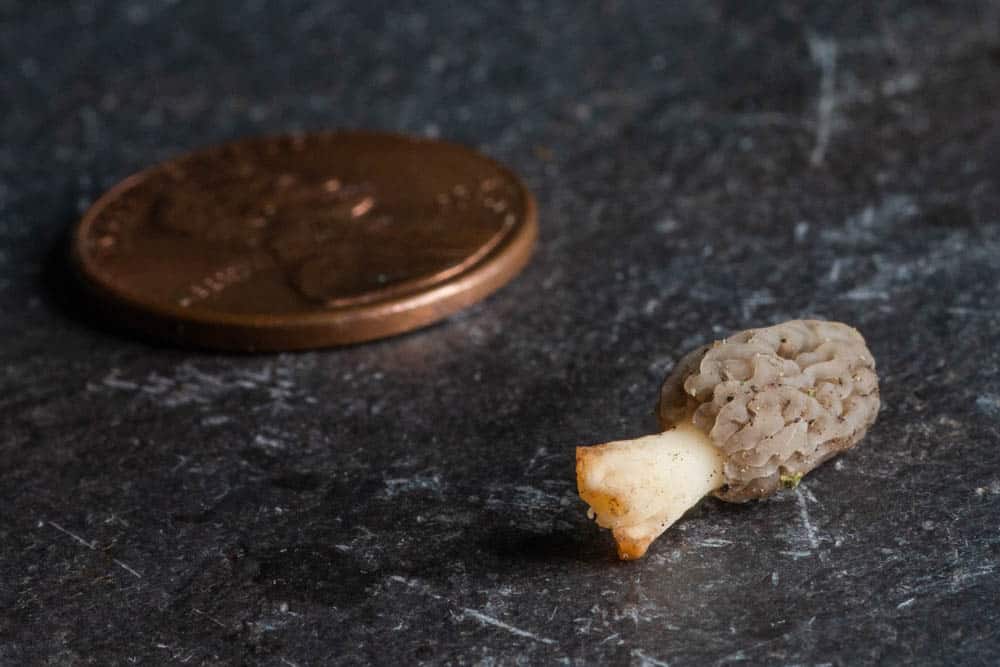
We picked the first morels today, It did not go as expected. My good friend Mike and I usually meet up at around 4 am to hunt in our favorite patch-we try to get there extra early since the good patch is also part of a public park.
The previous year we'd cleaned up pretty good, but you always miss a few mushrooms, and it only takes one to bring curious people back the next year.
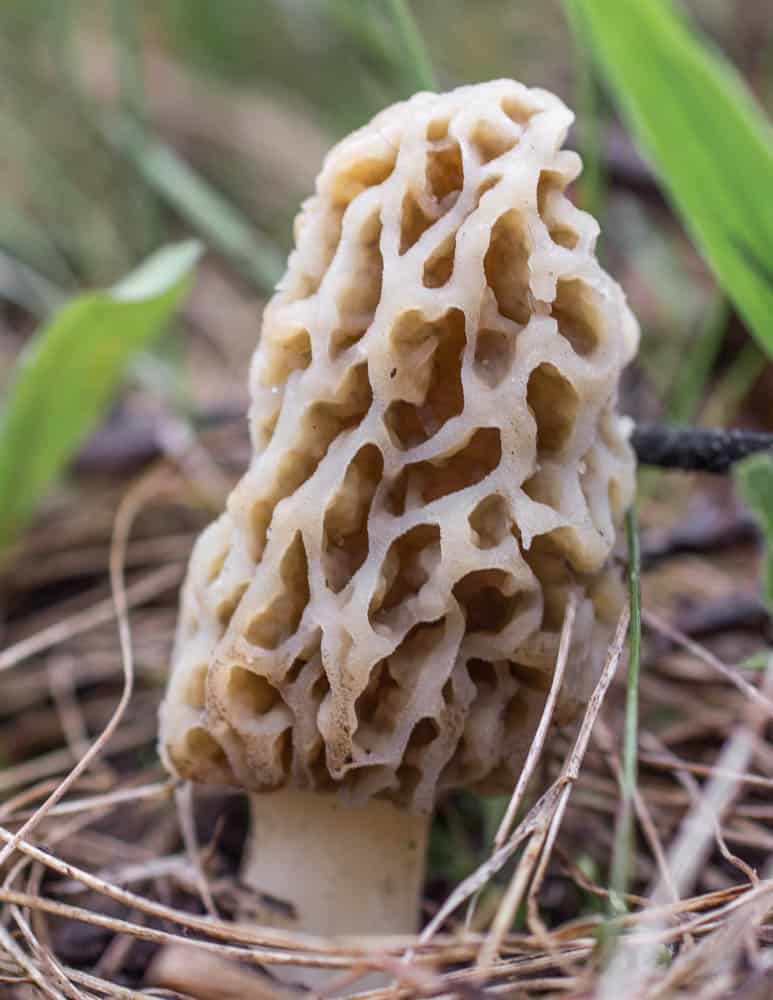
Not expecting much yet, we showed up around 9 am—late to the party by morel standards. There were a couple people walking their dogs about, but nothing suspicious.
We headed in a roundabout way to the entrance of the patch—a small valley housing two large cottonwood trees. Immediately we saw the worst possible thing: someone was picking morels in our patch.
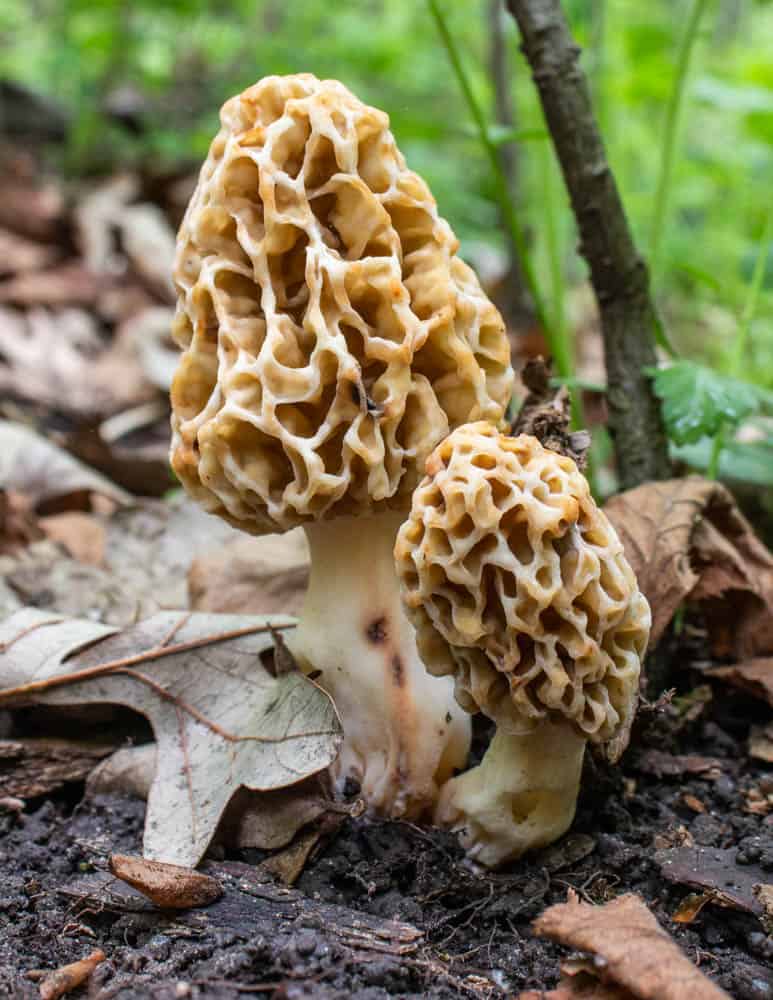
After exchanging a creative array of expletives, we struggled with what the best course of action might be. We decided to walk past and casually inspect what the picker was doing.
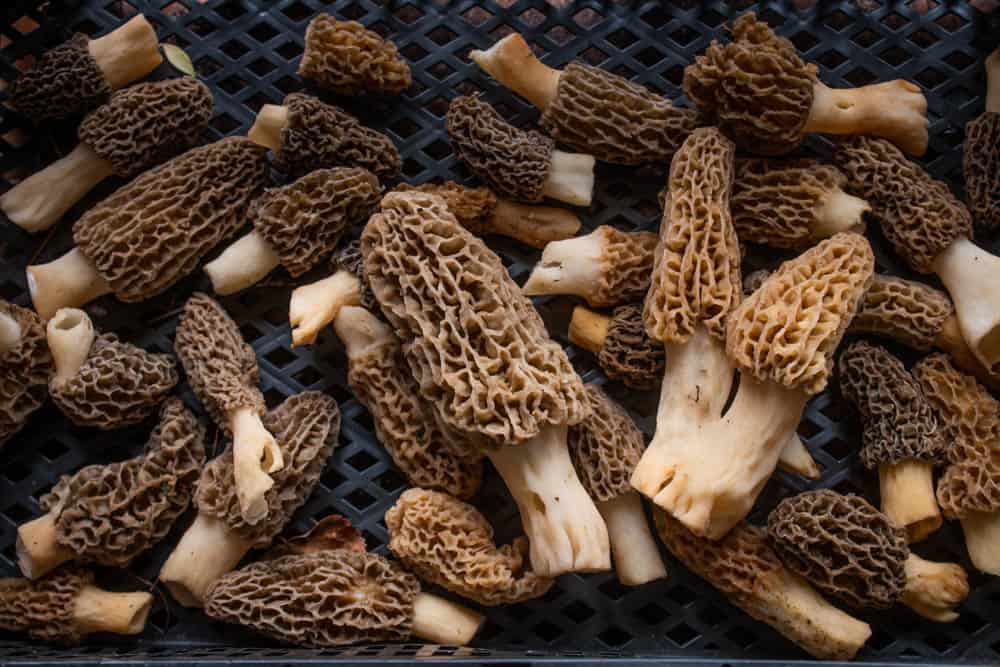
As any morel hunter knows, seeing someone pick your patch is frustrating, invoking a sort of jealous envy and gnashing of teeth.
Mushroom hunting is a competitive sport, and, as our patch is on public land, the other picker had just as much legal right to be there as us, but, if you've ever seen someone picking your patch, you'll know that pit-of-your-stomach feeling. It may be public land, but it's MY patch.
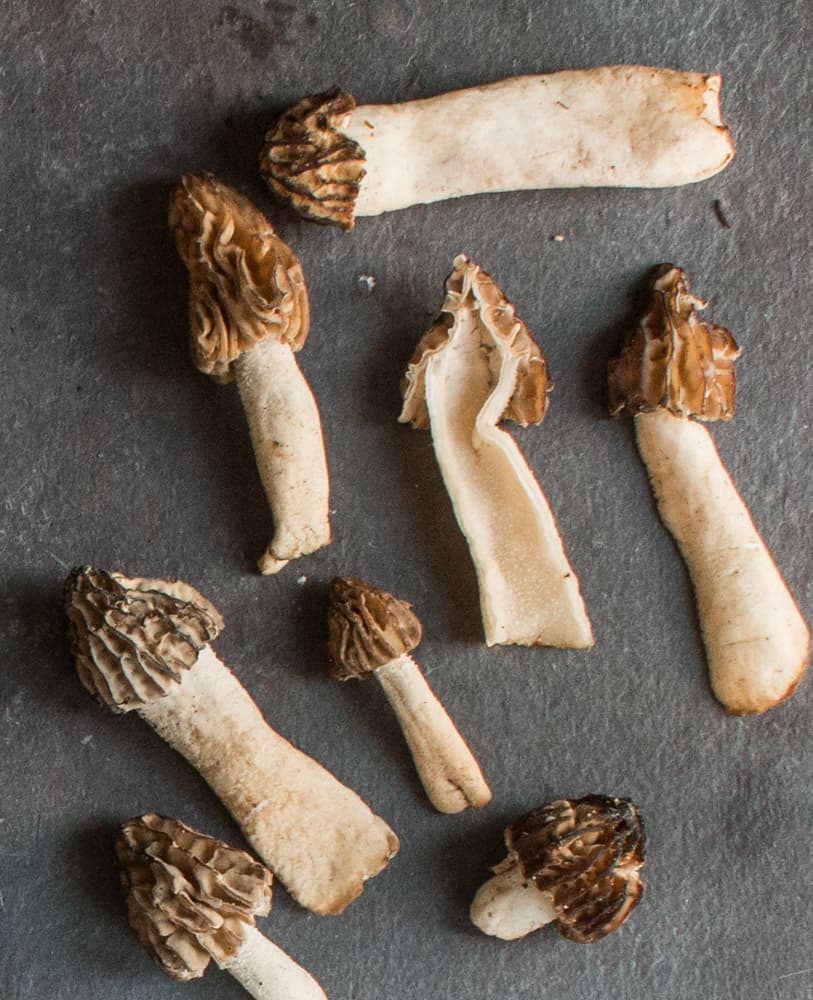
A woman was walking around, scanning the ground by herself. The bottom of her basket was scantily lined with the puniest, most immature morels we had ever seen, some were no bigger than a pen cap.
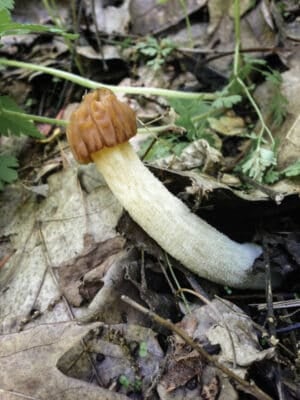
We approached and asked her if it would be good to let them grow a little bit more, she replied, in between breaths out of her mouth:
"Naw, these are just the "peckerhead morels", they are one of three flushes of morels here, The other kinds of morels will come later."
Horrified, we walked past nonchalantly and regrouped at a trash can down the trail where we could still have a vantage point. We discussed the actions of the other picker, it went something like this:
"Peckerheads?" Seriously? She honestly thinks these tiny morels are a different variety than the others?! How on earth could you come to that conclusion?
The answer to the question is a great example of why Latin names are so valuable in the world of mushroom hunting.
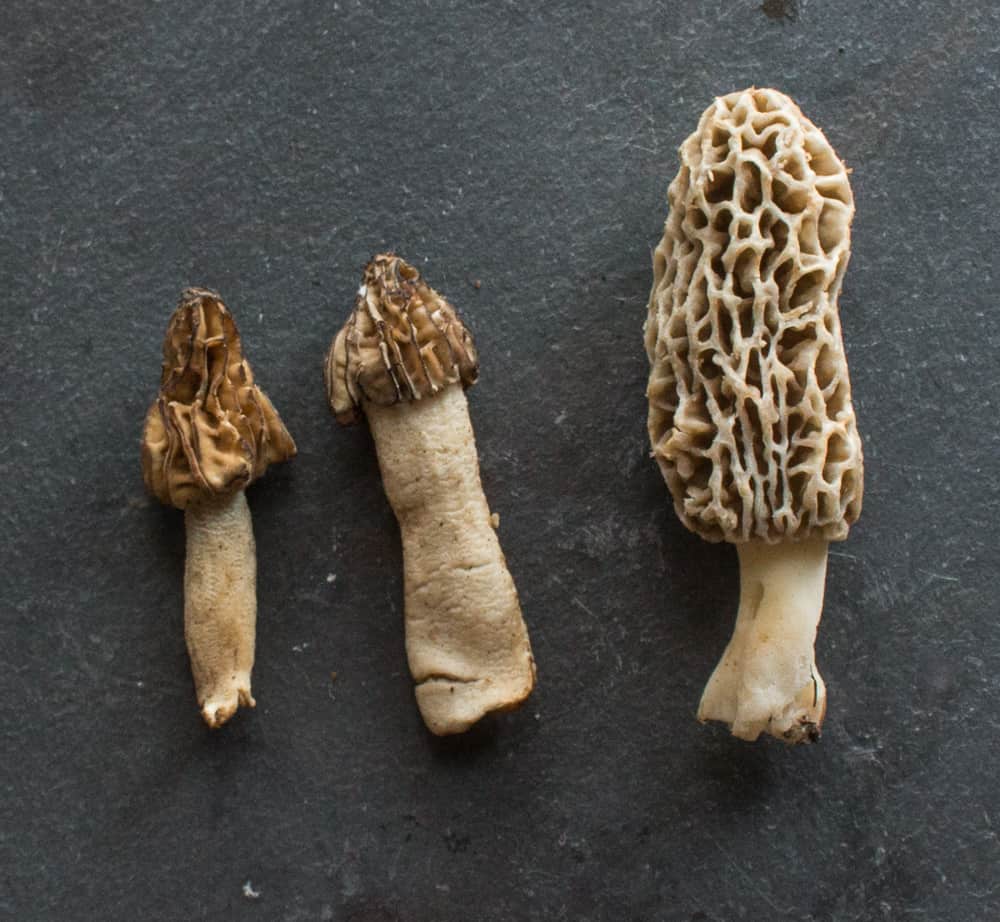
Peckerhead mushrooms
"Peckerhead morel" is a colloquial (common) name used to describe some cousins of morel mushrooms, but it strictly refers to mushrooms like Verpa bohemica and Morchella punctipes / Morchella semilibera, or verpas and half-free morels, respectively.
Those mushroooms have a much more elongated, thin, brittle stem, and a stout, small cap (one of the reasons they're also given the cringeworthy name of "dog pecker mushrooms".

To be clear, Peckerhead is not the correct common name for common morels, no matter what size they are, no matter what your grandpappy said.
Either way, the Verpa and Morchella semilibera / punctipes are all edible too (half free morels are technically morels) with the same precautions as morels (they need to be thoroughly cooked).
Further Reading
Forager's Guide to Morel Mushrooms
How to Cook Gyromitra (False Morels)
Morchella punctipes (mushroomexpert.com)

Creek
Wait so you have a caption here that says, "A small morel, but worth taking if there's competition." However, the lady in your patch was not allowed to pick the small morels though? Could you possibly have been driven to harbouring double standards by that jealous envy you mention?
Alan Bergo
Absolutely. This is an old post I've kept up to share the reality of competition and jealously in mushroom hunting. No one's perfect, and being a good person is a learned skill.
Creek
I appreciate the humility in your reply, and in leaving up the post. It's true that the competition and jealousy is an ugly side of it all, but natural and human too.
Micheal
Lmao what a dipshit. Thinking you re cool and acting like a know it all when you obviously dont know shit haha. Newsflash, the lady you're making fun of is 100% correct and you're an idiot. Why do I have the feeling that if it was a man out there in "your patch", neither you or your friend would have said a word to them.
kim andrew
been hunting morels for many many years and yes there is such thing as pecker heads. they have a longer stem and a shorter mushroom top. they mushroom part WILL NOT grow any bigger. it will just dry out and die. Yes, you can pick any mushroom too soon before it grows bigger but the conditions have to be right for it grows bigger. they do not have very long life spam while growing. you can't just leave it there and say I'll be back tomorrow or the next day to pick it will either be gone or dried out.
Alan Bergo
"Peckerheads", as I noted, are Morchella semilibera, punctipes, or verpa bohemica, depending. The woman was picking actual morels the size of a pinky nail. Either way I ammended the post a number of years ago, but thanks for commenting.
Jeff
There are such things as peckerheads and morels don't grow once they pop. Once they pop, they're done.
Those peckerheads would not miraculously turn into morels if left to "grow"
What a load of crap.
Alan Bergo
HA! You and the Warpig who hunt in my patch can have all the puny morels you like. I'll eat the mature ones, because they taste better.
Donny R Dale
If you don't pick them pecker heads they'll just dry up . Pickm when you see them and enjoy a good meal of fried pecker heads and some bluegill and crappie
Danae
Blewits! I am learning. I guess I didn't blow it and leave the blewits. I blew it when I left the hericium.
Alan Bergo
Wonderful Danae, I would love to hear about the terrain you found the blewits in. "blew it" lol.
Danae
Love that story!! The nerve to sacrifice the babies. Looking forward to the Spring. Still searching though - found some pretty bluets today. They went home with me.
Mike Kempenich
Really great read Alan. I had a wry grin imagining myself doing the exact same thing in response! It's a tough road to hoe when an individual doesn't even know what they don't know...
Alan Bergo
A week later I can say she was a riot! Thanks.
bob
guys I've never seen pecker heads ever in my 40 years of hunting,,,but i have actually now found some of those and googled them and they are in fact pecker heads,,,gots lots and were about 4-6 inches tall but looked different had mostly all stem,,,anyways she was right but that sure pisses you when someone gets your secret spot,,,lol,,,,,also i finally found my first ever false moral and made it go away,,,,,but now I've seen a new kind I've never seen they have a hollow moral stem and the normal hood like a true moral but the cap was smooth unlike the real moral,,,,any idea whats going on ??? are they cross breeding and formed a new mushroom ????? didn't trust my instincts as I take no chances,,,,any info please,,,,battle creek Mich,,,,,thx,,,,PS,,,,my mom cooked hers and said they weren't as good as the normal morals !!!!!!
Alan Bergo
Pictures help a lot. If you can find one of your suspect morel let me know. Good luck with the peckerheads brother.